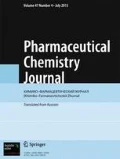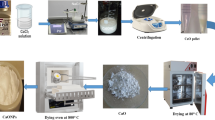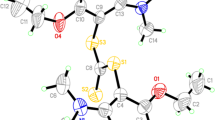In addition to recently established potential anticancer activity of isothiocyanates (ITCs) against ovarian cancer, a series of these compounds were found to express antibacterial efficacy toward Escherichia coli and Staphylococcus aureus. The isothiocyanates investigated exhibited significant activity with varying minimum inhibitory concentrations, being effective within 90 min against E. coli and 120 min against S. aureus. Moreover, higher pH levels led to an increase in the antibacterial activity of ITCs. The impact of ITCs on the cell wall structure was studied and cell membrane permeability differences were observed with higher crystal violet dye retention capacity in E. coli, indicating disparities in the cell wall composition between the two bacterial strains. The Fourier transform infrared spectroscopy data supported the disruptive effect of ITCs. Observance of the discharge of ultraviolet-absorbing intracellular materials and scanning electron microscopy investigations confirmed that cellular degradation and disruption occurred in both bacterial strains. These studies indicated that the ITCs under study exhibited effective antibacterial activity through alteration of the cell membrane permeability resulting in the cell damage of both bacterial strains, with higher activity observed against E. coli.








Similar content being viewed by others
References
B. Spellberg and Y. Doi, J. Infect. Dis., 212, 1853 – 1855 (2015).
E. Y. Garoy, Y. B. Gebreab, O. O. Achila, et al., Can. J. Dis. Med., 2019, 8321834 (2019).
M. Baym, L. K. Stone, and R. Kishony, Science, 351(6268), aad3292 (2016).
K. Mazumdar, K. A. Kumar, and N. K. Dutta, Int. J. Antimicrob. Agents, 36, 295 – 302 (2010).
V. W. C. Soo, B. W. Kwan, H. Quezada, et al., Curr. Top. Med. Chem., 17, 1157 – 1176 (2017).
K. K. Brown and M. B. Hampton, Biochim. Biophys. Acta, 1810, 888 – 894 (2011).
L. Romeo, R. Iori, P. Rollin, et al., Molecules, 23, 1 – 18 (2018).
V. I. Boev, T. N. Maslenkova, E. I. Pil’ko, et al., Pharm. Chem. J., 24, 818 – 822 (1990).
B. D. Grishchuk, L. I. Vlasyk, A. V. Blinder, et al., Pharm. Chem. J., 30, 630 – 632 (1996).
N. Kurepina, B. N. Kreiswirth, and A. Mustaev, J. Appl. Microbiol., 115, 943 – 954 (2013).
V. Dufour, M. Stahl, and C. Baysse, Microbiology, 161, 229 – 243 (2015).
S. J. Kaiser, N. T. Mutters, B. Blessing, et al., Fitoterapia, 119, 57 – 63 (2017).
M. Hartmann, M. Berditsch, J. Hawecker, et al., Antimicrob. Agents Chemother., 54, 3132 – 3142 (2010).
R. M. Epand, C. Walker, R. F. Epand, et al., Biochim. Biophys. Acta, 1858, 980 – 987 (2016).
C. Dias and A. P. Rauter, Future Med. Chem., 11, 211 – 228 (2019).
C. F. Carson, B. J. Mee, and T. V. Riley, Antimicrob. Agents Chemother., 46, 1914 – 1920 (2002).
K. Richa, R. Karmaker, N. Longkumer, et al., Anticancer Agents Med. Chem., 19, 2211 – 2222 (2019).
B. M. Vinoda, Y. D. Bodke, M. Vinuth, et al., Organic Chem. Curr. Res., 5(1), (2016).
D. M. Culafic, B. V. Gacic, J. K. Vukcevic, et al., Arch. Biol. Sci., 57, 173 – 178 (2005).
G. Wu, J. Ding, H. Li, et al., Curr. Microbiol., 57, 552 – 557 (2008).
K. P. Devi, S. A. Nisha, R. Sakthivel, et al., J. Ethanopharmacol., 130, 107 – 115 (2010).
K. Zhou, W. Zhou, P. Li, et al., Food Control, 19, 817 – 822 (2008).
H. M. Al-Qadiri, N. I. Al-Alami, M. A. Al-Holy, et al., J. Agric. Food. Chem., 19, 8992 – 8997 (2008).
P. Bharali, J. P. Saikia, A. Ray, et al., Colloids Surf. B., 103, 502 – 509 (2013).
A. Ray, P. Bharali, and B. K. Konwar, Appl. Biochem. Biotechnol., 171, 2003 – 2019 (2019).
C. Dias, A. Aires, and M. J. Saavedra, Int. J. Mol. Sci., 15, 19552 – 19561 (2014).
C. Weigand, M. Abel, P. Ruth, et al., Skin Pharmacol. Physiol., 28, 147 – 158 (2015).
E. M. Jones, C. A. Cochrane, and S. L. Percival, Adv. Wound Care, 4, 431 – 439 (2015).
L. Alexander, S. Andreas, S. Grabbe, et al., Arch. Dermatol. Res., 298(9), 413 – 20 (2007).
M. Feoktisova, P. Geserick, and M. Leverkus, Cold Spring Harb. Protoc., 343 – 346 (2016).
O. S. Aslanturk, Genotoxicity: A Predictable Risk to Our Actual World, in: M. L. Larramendy and S. Soloneski (Eds), IntechOpen (2017).
N. Anand and B. Davis, Nature, 185, 22 – 23 (1960).
N. Anand, B. Davis., and A. Armitage, Nature, 185, 23 – 24 (1960).
H. J. Busse, C.Wostmann, and E. P. Bakker, J. Gen. Microbiol., 138, 551 – 561(1992).
F. V. Bambeke, M. P. Mingeot-Leclercq, A. Schanck, et al., Eur. J. Pharmacol., 247, 155 – 168 (1993).
N. Li, M. Luo, Y. Fu, et al., Phytother Res., 27, 1517–1523 (2013).
M. A. Al-holy, M. Lin, A. G. Cavinato, et al., Food Microbiol., 23, 162 – 168(2006).
ACKNOWLEDGMENTS
The authors are particularly grateful to Professor C. R. Deb, Biotech Hub, Department of Botany, Nagaland University, Lumami for extending the usage of his laboratory facilities.
CONFLICT OF INTEREST
The authors declare that they have no conflicts of interest.
Funding
The author Temsurenla is thankful for the University Grants Commission–Basic Science Research Fellowship (No. NU/PF/F-17/2013), and Aola Supong is thankful for the DST-INSPIRE Fellowship (No. DST/INSPIRE Fellowship/IF160718) to the Department of Science and Technology, India. The authors also acknowledge the financial assistance through DBT Project No. BT/PR28873/NER/95/1527/2020.
Author information
Authors and Affiliations
Corresponding author
Rights and permissions
About this article
Cite this article
Richa, K., Temsurenla, Supong, A. et al. Mechanistic Insight into the Antibacterial Activity of Isothiocyanates via Cell Membrane Permeability Alteration. Pharm Chem J 56, 300–308 (2022). https://doi.org/10.1007/s11094-022-02634-x
Received:
Published:
Issue Date:
DOI: https://doi.org/10.1007/s11094-022-02634-x




